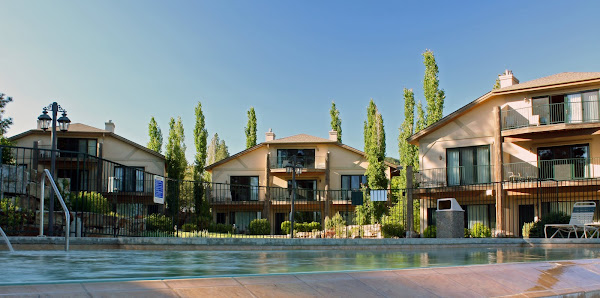When planning your vacation to Bigfork, Montana and Flathead Lake, be assured you won’t lack for fun things to do. Fishing is fantastic here, and you can get out on Flathead Lake in a boat, canoe, sailboat or kayak. Or hike at various locations around the lake on one of the many trails.
Open space on the shoreline includes the National Wildlife Refuge on the North Shore and State land managed by the Flathead Lake Biological Station as a refuge on the South Shore (Polson Bay).
The name "Yellow Bay" was derived from the yellow rock outcrop on the point which is Precambrian without fossils. The outcrop belongs to the Algonkian substrata, which also outcrops Glacier Park. Flathead Lake Biological Station was established in Bigfork, Montana in 1899 by Dr. Morton J. Elrod. This Flathead Lake Biological Station was moved to its present location at Yellow Bay in 1908 and is currently operated as a year-round academic and research facility by the University of Montana.
Studies at the Flathead Lake Biological Station show that water quality in Flathead Lake is among the best in the world. In spite of its renowned purity, studies also show that the water quality of Flathead Lake has declined over the last decade due to the combined effects of increased pollution from human sources, erosion of the shoreline caused by dam operations and introduction of non-native flora and fauna.
 Yellow Bay
Yellow Bay
There are 25 species of fish commonly found in the Flathead River-Lake ecosystem.
Native fish include redside shiner, peamouth minnow, squawfish minnow, largescale sucker, longnose sucker, sculpin, bull trout, cutthroat trout, pygmy whitefish and mountain whitefish.
Lake trout, lake whitefish, and yellow perch are the most common nonnatives and have increased in abundance since 1970, whereas native fish species have declined.

Due to its massive volume and normally active winds over the surface of the lake, Flathead Lake does not freeze completely over most winters,
Facts about Flathead Lake
Maximum Length 27.3 miles (43.9 km)
Maximum Width 15.5 miles (24.9 km )
Maximum Depth 370.7 feet (113.0 meters)
Average surface temperatures of Flathead Lake
36°F ( 2.3° C) in mid-January
56°F (13.5°C) in mid-June
68°F (20.3°C) in mid-August
Flathead Lake is one of the 300 largest natural lakes in the world and is the largest natural freshwater lake in the west of the Mississippi. Of those large lakes, Flathead is one of the cleanest. • The Lake's major tributaries are the Flathead and Swan Rivers.
Numerous small streams flow directly into the Lake at its shoreline, particularly on the wetter East Shore.
Kerr Dam is located at the outlet of Flathead Lake in Polson, at the southern end. Regulation of outflow by the dam maintains the Lake's level between 2,883 and 2,893 feet above sea level. If runoff conditions in the mountains don't warrant flood threats, the Lake level is brought to 2,890 feet by the end of May and to full pool by June 15.
Maximum flow in the Flathead River generally occurs during spring runoff.
Open space on the shoreline includes the National Wildlife Refuge on the North Shore and State land managed by the Flathead Lake Biological Station as a refuge on the South Shore (Polson Bay).
Wildhorse Island, protected as a state park since 1978, near Big Arm Bay, is the largest island in the lake, at 2,100 acres. It is managed by the Montana Department of Fish, Wildlife and Parks as a wildlife refuge. Accessible only by boat, you can enjoy the beach and hike the easy trails cross the island. It is noted for its herd of Rocky Mountain Bighorn Sheep, Bald Eagles, Mule Deer, Osprey and several Wild Horses. Native grasses and flowers are abundant. For centuries, the Salish-Kootenai used the island to pasture horses to keep them from being stolen by other tribes.
Wild Horse Island
The name "Yellow Bay" was derived from the yellow rock outcrop on the point which is Precambrian without fossils. The outcrop belongs to the Algonkian substrata, which also outcrops Glacier Park. Flathead Lake Biological Station was established in Bigfork, Montana in 1899 by Dr. Morton J. Elrod. This Flathead Lake Biological Station was moved to its present location at Yellow Bay in 1908 and is currently operated as a year-round academic and research facility by the University of Montana.
Studies at the Flathead Lake Biological Station show that water quality in Flathead Lake is among the best in the world. In spite of its renowned purity, studies also show that the water quality of Flathead Lake has declined over the last decade due to the combined effects of increased pollution from human sources, erosion of the shoreline caused by dam operations and introduction of non-native flora and fauna.
 Yellow Bay
Yellow BayThere are 25 species of fish commonly found in the Flathead River-Lake ecosystem.
Native fish include redside shiner, peamouth minnow, squawfish minnow, largescale sucker, longnose sucker, sculpin, bull trout, cutthroat trout, pygmy whitefish and mountain whitefish.
Lake trout, lake whitefish, and yellow perch are the most common nonnatives and have increased in abundance since 1970, whereas native fish species have declined.

Due to its massive volume and normally active winds over the surface of the lake, Flathead Lake does not freeze completely over most winters,
although the bays often have an icy winter covering.
However, Flathead Lake did freeze over in the winters of
1978-79 all winter,
1987-88 all winter,
1988-89 March only,
1989-90 January only.





No comments:
Post a Comment
Thanks for sharing your thoughts with us!